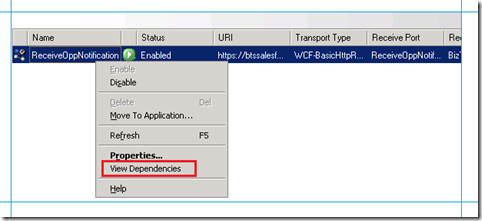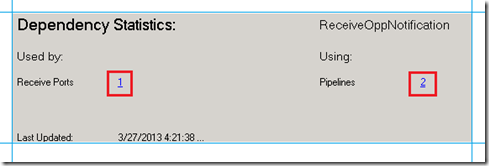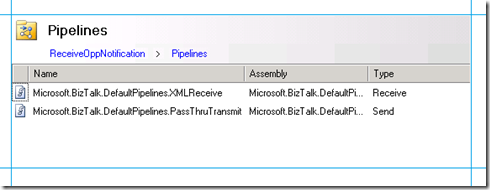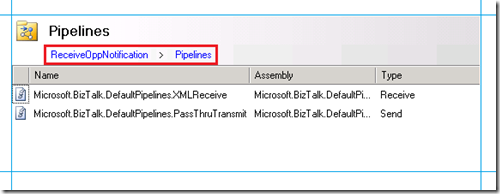BizTalk Server 2013 - New Features Blog Series - Dependency Tracking
In this blog series, I’ll try to go through the new features introduced in BizTalk Server 2013. I’ll start with Dependency Tracking.
A BizTalk Server application may contain a bunch of artifacts such as send ports, receive locations, orchestrations, schemas, transforms, etc. Moreover, sometimes these artifacts can be shared between more than one BizTalk Server application. So, it becomes very difficult for BizTalk Server admins to come up with a “dependency tree” that provides information on both the aspects of dependencies, which are:
- How a given artifact “uses” other artifacts.
- How a given artifact is “used by” other artifacts.
The BizTalk Server Administration console uses the same philosophy to display the dependencies. Let’s see how it works.
Let’s pick an artifact in the BizTalk Server Administration console, for example, a receive location. Right-click the artifact, and select View Dependencies.
There’s a new Dependency Statistics pane at the bottom of the page that now lists the dependencies, categorizing it as Used by (which artifacts use this receive location) and Using (which artifacts are used by this receive location). This is how the pane looks like.
The Dependency Pane shows that the ReceiveOppNotification receive location is used by one Receive Port but the receive location in turn uses two pipeline components. Notice that the numbers are links, so you can click those to see the dependent/dependent on artifacts. So, if I click on the number 1 above, the top pane will refresh to show the receive port that uses the ReceiveOppNotification receive location. Similarly, if I click on 2, the top pane refreshes to list the two pipelines that are used by the receive location.
Notice that even though you are now viewing the pipelines that are used by the receive location, the Dependency Statistics pane does not refresh to show the dependency view for the pipelines. It won’t refresh the view, until you select another artifact and click View Dependency again to view it’s dependencies. Also notice the breadcrumbs trail at the top. That shows which dependent artifacts we are looking at and enables you to go back to any level.
This feature should really be helpful for BizTalk Server Admins in tracking what other artifacts might get affected if they update a schema, for example. All this while the admins had to manually document all these dependencies but with this enhancement, hopefully it should become much simpler for them.
Other Links



